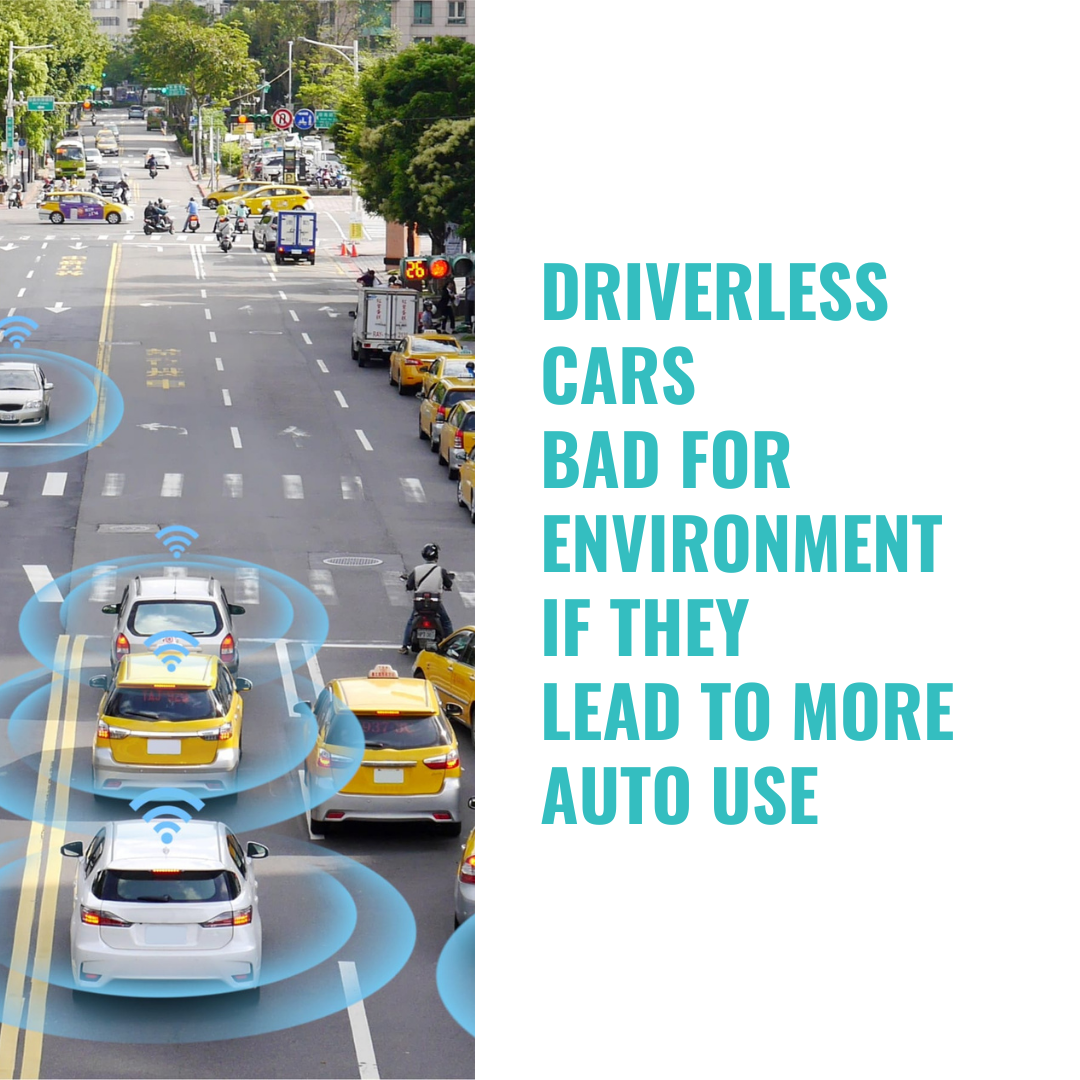Automated vehicles hold tremendous promise. Cars that handle most or all driving tasks could be safer than human drivers, operate more efficiently and open up new opportunities for seniors, people with disabilities and others who can’t drive themselves. But while attention has understandably focused on safety, the potential environmental impacts of automated vehicles have largely taken a back seat.
We study automated vehicle technologies and how consumers are likely to use them. In two recent studies, our research teams found two creative ways to assess the real-life impacts that automated vehicles could have on the environment. By analysing drivers’ use of partially automated vehicles and simulating the expected impact of future driverless vehicles, we found that both automated vehicle types will encourage a lot more driving. This will increase transportation-related pollution and traffic congestion unless regulators take steps to make car travel less appealing. MORE MILES, MORE CARBON EMISSIONS Research has previously suggested that automated vehicles could cause people to drive more than they currently do, leading to more congestion, energy consumption and pollution. Riding in a car as a passenger is much less stressful than driving, so people might be willing to sit through longer trips and battle more traffic if they can relax and do other things during the journey. The promise of a relaxed, comfortable commute to work could even make some people move farther away from their workplaces and accelerate suburban sprawl trends. People would also have the ability to send their cars on “zero-occupancy” trips or errands without passengers. For example, if you don’t want to pay for parking downtown, at some point, you may be able to send your car back home while you’re at work and summon it when needed. Convenient, but also twice the driving. THE REAL-WORLD ENVIRONMENTAL IMPACTS OF AUTOMATED CARS While we and other researchers have predicted these outcomes through modelling, no one has been able to verify them because fully automated vehicles aren’t commercially available yet. So we found two innovative ways to use currently available technologies to study the real-world impacts of automated vehicles. WHEN PEOPLE DRIVE PARTIALLY AUTOMATED VEHICLES, THEY TRAVEL FARTHER. In a study published in mid-2021, we surveyed 940 people who drive partially automated vehicles. Systems like Tesla’s Autopilot can assist with driving tasks and reduce the burden of driving, although to a lesser degree than fully automated vehicles will. We found that drivers who used Autopilot drove an average of nearly 5,000 more miles per year than those who didn’t. In interviews with 36 drivers of partially automated vehicles, they generally said they were more willing to sit in traffic and took more long-distance trips, all because of the increased comfort and reduced stress provided by semi-automated systems. WHEN PEOPLE CAN USE A CAR WITHOUT HAVING TO OPERATE IT, THEY INCREASE THEIR CAR TRAVEL. In a separate study conducted in late 2019 and early 2020, we simulated the function of a fully automated vehicle by providing 43 households in Sacramento, California, with a chauffeur service to take over the family driving duties and tracking how they used it. These households increased their vehicle miles travelled by 60% over their pre-chauffeur travel and dramatically reduced their use of transit, bicycling and walking. In addition, more than half of the increase in vehicle travel involved sending chauffeurs on zero-occupancy trips without a household member in the car. LIMITING POLLUTION FROM AUTOMATED CAR USE These findings show that automated vehicles will encourage a lot more driving in the future and that partially automated vehicles are doing so now. But, is there any way to reap its benefits without making climate change, air quality, and congestion worse? Requiring future automated vehicles to use zero-emission technology, as California is doing, can be a big help. But until countries develop a 100% carbon-free electricity system, even electric cars will produce some upstream emissions from power generation. And all car travel causes other harmful impacts, such as water and air pollution from brake and tire wear, collisions with wildlife and traffic congestion. TO PREVENT AN EXPLOSION IN DRIVING AND ASSOCIATED HARMS, REGULATORS AND COMMUNITIES NEED TO SEND SIGNALS THAT DRIVING ISN’T FREE. They could do this by putting a price on car travel – particularly on zero-occupancy trips. In place of fuel taxes, state and federal governments could adopt user fees or charges for the number of vehicle miles that drivers travel. Correctly pricing the cost of private vehicle travel could encourage travellers to consider cheaper and more efficient modes, such as public transit, walking and bicycling. These fees could be adjusted based on location – for example, charging more to drive into dense city centres – or other factors such as time of day, traffic congestion levels, vehicle occupancy and vehicle type. Modern communication technologies can enable such policies by tracking where and when cars are on the roads. Another option would be to promote shared fleets of automated vehicles rather than privately owned ones. We envision these as commercial companies, similar to Uber, Lyft and other ride-sharing providers. Having a car available when needed could make it possible to forgo car ownership and could serve travel demand much more efficiently by essentially acting as on-demand transit. These networks could also help riders reach fixed-route public transportation services that operate on main transportation corridors. All of these policies will be most effective if they are adopted now, before automated vehicles are widespread. A transportation future that is automated, electric and shared could be environmentally sustainable – but in our view, it’s unlikely to evolve that way on its own. Click here to read more articles in our Drive Now February 2022 issue.
1 Comment
|
NewsDRIVE NOW reports on various topics regarding the Archives
December 2022
Categories
All
|
DRIVE NOW Magazine is published by Trade Promotions Pty Ltd, Ashwood VIC Australia. © 2022 DRIVE NOW |


 RSS Feed
RSS Feed